Immigrants from Japan to Latin America. Immigration is not just about "migrating," it is also about making contributions to building the partner country.
Here we will introduce efforts to leave that history behind for posterity.

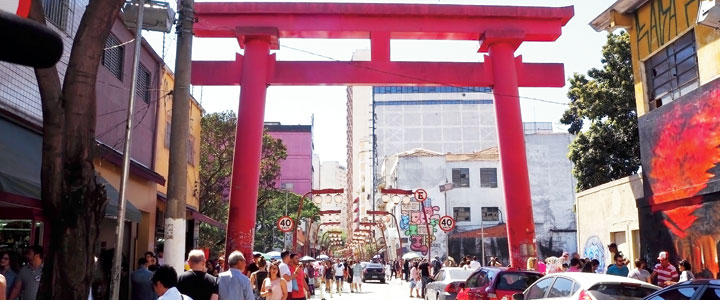
"Japanese society and culture rooted in Brazil"
The Liberdade East Asian quarter located in Sao Paulo, Brazil. The Historical Museum of Japanese Immigrants in Brazil is also located in this area.
Participants in the creation of a new civilization
The first immigrants to Brazil were the 781 people that crossed the ocean on the "Kasato Maru" in 1908. Today, about 2 million people of Japanese heritage live in Brazil.
In 1978, an international symposium was held in Sao Paulo to commemorate the milestone of the 70th anniversary of Brazilian immigration. The keynote speech was given by Mr. UMESAO Tadao (who passed away in 2010), who was then serving as the Director of the National Museum of Ethnology and was known as "The Knowledge Giant."
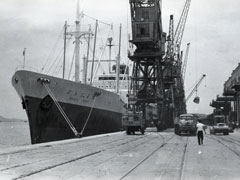
The "BRAZIL MARU" immigrant ship at port in Santos, Brazil. About 230,000 people entered South America through this port.
The title of his speech was "Participating in the new world." He asked us to consider the civilizational meaning in human history not just from looking at the "migration" of immigrants. He also pointed out that immigrants from Japan were accepted by Brazil as participants in a new civilization, and summarized that "They were not customers, and nor were they interloping intruders. They were participants. This is the civilizational meaning of the Japanese immigrant. These Japanese people were truly participants in the formation of a new civilization."
In fact, it was Japanese people that cultivated the primeval forest, promoted agriculture and developed these towns. Also, the emphasis on education of second and third generation Japanese that were born in Brazil has further contributed to the development of Brazil, as they have taken jobs in a wide range of fields such as doctors, lawyers, teachers, and artists, etc., and eventually going into politics and the bureaucracy.
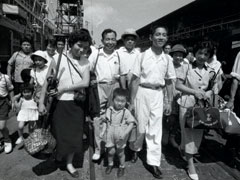
Disembarking at the Santos Port. Immigration inspections were carried out on board before going to the customs inspection site.
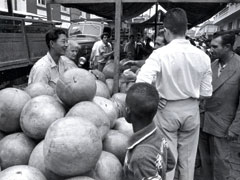
A Japanese descendant who opened a store in the market selling vegetables.
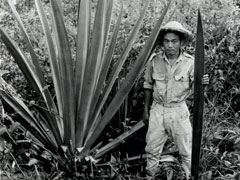
Sisal hemp cultivation. About 600 kg of course thread can be produced per ha.
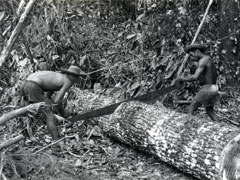
Using trees cut from the forest, props were made for the cultivation of pimento (pepper).
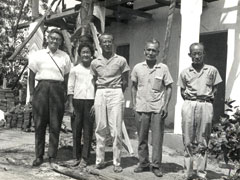
Japanese people who immigrated to northeastern Brazil. Here they cultivated cotton, and beans, rice, and vegetables.
Networking History Museums
In order to leave the history of such immigrants for posterity there are museum collections in Brazil and Japan with exhibits under the concept of "Participating in the new world," and the theme of "‘A Living Museum' which uncovers the truth of history and shares new knowledge" as advocated by Mr. Umesao.
The Historical Museum of Japanese Immigrants in Brazil in Sao Paulo opened in 1978, the same year as Mr. Umesao's speech. Three floors of the building are used to communicate the lifestyle of early immigrants with exhibits such as life tools and pioneer huts, etc., introducing the history of Japanese descendent society up to the end of the war. Three years ago the museum was renewed in stages under the concept of a "Living History Museum", and in January of this year the "Immigration History and Japanese Cultural Research Center" was established.
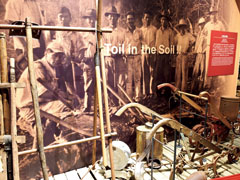
[JICA Yokohama: Japanese Overseas Migration Museum]
An exhibition of farm equipment used by immigrants. These were used to plow the earth and to try to grow various crops.
Second generation Japanese descendent Ms. Lídia Reiko Yamashita, who serves as the Chair of the Steering Committee, says "There are other history museums scattered throughout Brazil. Some of these are privately operated. However, there are some places which have not been able to continue due to aging, or that have been let unattended in spite of being entrusted to local governments to operate them, so our first task now is to develop a cooperative network between these museums."
Also, some valuable historical materials such as Japanese newspapers, etc., have seriously deteriorated over the years. The JICA Brazil Office has loaned a large scanner which can scan newspapers, and the process of digitization is under way.
The JICA Yokohama Japanese Overseas Migration Museum is in Yokohama. It opened in 2002, and Mr. Umesao was involved as a special advisor. One of the predecessor organizations of JICA was involved in post-war migration, and Yokohama was the port of departure for immigrant ships.
Here, you can see how people that left Japan contributed to the areas that they arrived at, and how they participated in the development of a civilization. These immigrants from more than 100 years ago were pioneers of "international cooperation" who gained the trust of the people in each country.
Chair of the Steering Committee of the Historical Museum of Japanese Immigrants in Brazil
Ms. Lídia Reiko Yamashita
"With the current Covid-19 crisis the museum is closed, but we are planning a symposium which will take advantage of the internet to connect the Yokohama museum with Japanese immigrant museums, not only in Brazil, but in North America, including Hawaii, as well as South America."
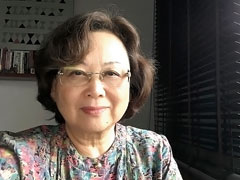
Ms. Lídia Reiko Yamashita
Historical Museum of Japanese Immigrants in Brazil
Historical Museum of Japanese Immigrants in Brazil in Sao Paulo.
See each website for details about the Historical Museum of Japanese Immigrants in Brazil.
Historical Museum of Japanese Immigrants in Brazil (external link)

Scan the code for details.
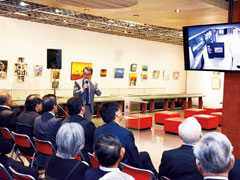
Opening Ceremony for the "Living History Museum" renewal.
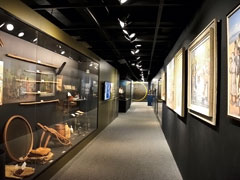
The lifestyle of the times is told in a simple way in the exhibition aisles.
JICA Yokohama Japanese Overseas Migration Museum
See how Japanese people lived in the Meiji era.
See each website for details about the JICA Yokohama Japanese Overseas Migration Museum.

Scan the code for details.
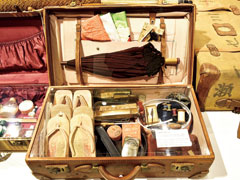
A women's trunk that travelled to Brazil. This is said to be "only a little luggage," and only the things immediately around them were packed. The most useful tools were said to be a child enema and a sewing tool.
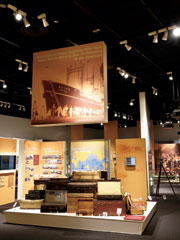
A corner exhibiting trunks that were carried by immigrants.
The 6 black and white photos on p. 10-11 are from the JICA Yokohama Japanese Overseas Migration Museum collection.
Reference: JICA Yokohama "Japanese Overseas Migration Museum Newsletter 10th Anniversary Edition 2012"




scroll